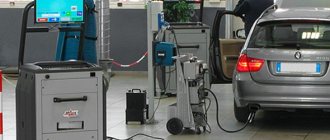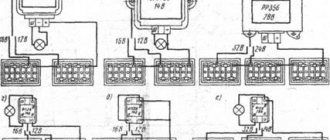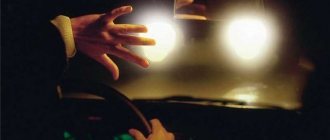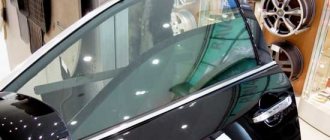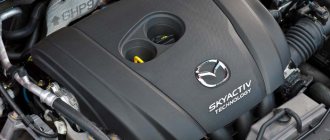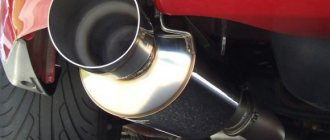Introduction
According to statistics, more than 80% of all road accidents involve cars. More than one million people are killed every year and about 500 thousand are injured. In an effort to draw attention to this problem, every 3rd Sunday of November has been declared by the UN as “World Day of Remembrance for Road Victims”. Modern car safety systems are aimed at reducing the existing sad statistics on this issue. Designers of new cars always closely follow production and safety standards. To do this, they simulate all sorts of dangerous situations in crash tests. Therefore, before being released into the world, the car undergoes a thorough check and is suited for safe use on the road.
Car accidents cause many deaths
But it is impossible to completely eliminate this type of incident at this level of development of technology and society. Therefore, the main emphasis is on preventing an emergency and eliminating the consequences after it.
Car safety tests
The main organization for assessing vehicle safety is the European Association for New Car Testing. It has existed since 1995. Each new car brand that has passed through a series of tests is given a rating on a five-star scale - the more stars, the better.
Each new car brand must undergo a series of tests
For example, through tests they have proven that the use of high airbags reduces the risk of head injury by 5-6 times.
Evolution in passive safety systems
Recently, passive safety systems have improved significantly. For example, body structures that absorb impacts. These bodies are designed to reduce damage to pedestrians after an accident.
Another important aspect of the operation of passive safety systems is ECall systems, which allow you to call rescue clubs immediately after an accident, thereby reducing waiting times. It should be kept in mind that the response time of emergency services can be critical to saving lives.
In addition, today, many cars are equipped with a special injection system. This breakthrough allows the engine pump and fuel tank to be isolated after an accident, reducing the risk of fire.
In short, passive safety systems are key to minimizing risks on the road. And remember that it is extremely important to be responsible while driving.
5 / 5 ( 1 voice )
Active safety systems
The most popular active safety systems that significantly increase the effectiveness of the braking system are:
1) Anti-lock braking system. It eliminates wheel locking during braking. The purpose of the system is to prevent the car from sliding if the driver loses control during emergency braking. ABS reduces the braking distance, which will help you avoid hitting a pedestrian or ending up in a ditch. The benefit of anti-lock brakes is traction control and electronic stability control;
Anti-lock braking system (components)
2) Traction control system. The system is designed to improve vehicle control in difficult weather conditions and poor traction conditions, using a mechanism to influence the drive wheels;
3) Stability control system. Prevents unpleasant car skidding thanks to the use of an electronic computer, which simultaneously controls the torque of the wheel or wheels. The computer-led system takes control when the likelihood of a person losing control is close - therefore it is a very effective car safety system;
Stability control
4) System that distributes braking forces. Complements the anti-lock brake system. The main difference is that CPT helps control the braking system while the vehicle is in motion, not just during an emergency. It is responsible for the uniform distribution of braking forces across all wheels in order to maintain the trajectory set by the driver;
5) Electronic differential lock mechanism. The essence of its work is this: during a skid or slide, a situation often arises that one of the wheels hangs in the air, continuing to spin, and the support wheel stops. The driver loses control of the vehicle, which creates the risk of an accident on the road. In turn, the differential lock allows you to transfer torque to the axle shafts or cardans, normalizing the movement of the car.
6) Automatic emergency braking mechanism. Helps in cases where the driver does not have time to fully press the brake pedal, i.e. the system itself automatically applies brake pressure.
7) Pedestrian approach warning system. If a pedestrian dangerously approaches the car, the system will sound a sound signal, which will help avoid an accident on the road and save his life.
There are also safety systems (assistants) that come into operation before an accident occurs, as soon as they sense a potential threat to the driver’s life, while they take over responsibility for the steering and braking system. The breakthrough for the development of these mechanisms was given by a breakthrough in the study of electronic systems: new types of devices are produced, and the usefulness of control units increases.
These systems include:
- Various radar, acoustic and ultrasonic systems that warn the driver about unfavorable distances from other cars, walls, obstacles;
- A system that allows you to automatically increase or decrease speed when approaching other cars - adaptive cruise control;
Adaptive cruise control
- The handbrake is a mechanism that allows you to hold the car tightly on various surfaces at a certain angle, thereby protecting it from unplanned movements;
- Systems that help control smooth descent and ascent;
- Automatic steering system;
- System providing night vision;
Night vision system
- Mechanisms for remote recognition of road signs;
- A system for recognizing and taking immediate action in case of driver fatigue.
Future without danger
The history of automotive safety systems in their modern form began in 1958, when Volvo introduced the three-point driver's seat belt design, which became the first standard in this field. Ten years later, ABS appeared, and in 1981, airbags appeared. These three fundamental inventions determined the further development of the industry, dividing all security systems into passive and active.
The list of the former has expanded to include tempered glass that shatters without forming sharp fragments, soft interior parts, programmable body deformation, a power frame made of especially strong steel, and so on. The latter gave the world a whole brood of various electronic driver assistants: from the exchange rate stability system to adaptive cruise control, capable of independently braking in front of an obstacle.
Both areas are constantly expanding, and what was yesterday in the advertising brochures of premium brands is today included in the standard equipment of mass-market cars. Blind spot sensors, auto-dimming mirrors, active head restraints - all of these are in one way or another an evolution of the original safety concepts. However, a number of companies are working on solutions that are difficult to categorize.
Lenta.ru talks about the most unusual and innovative security systems.
The list of options for a modern car can take up more than one page, so the main danger for the driver today is himself. The car is capable of holding the road perfectly and braking extremely effectively, but what good is this if the driver, for example, fell asleep at the wheel? According to statistics, every fifth road accident in the world occurs due to drowsiness and the associated lack of attention. Automakers have not yet developed a single way to combat sleepy driving.
Some companies offer preventive measures - to warn the motorist that he is tired by analyzing the behavior of the car on the road. Others prefer to minimize the consequences of sleeping while driving by training the electronics to keep the car in its lane and stop if the driver suddenly stops driving it.
The Australian company Seeing Machines found it most reasonable to determine that a person has fallen asleep and wake him up. Its Driver Monitoring system monitors the direction of the driver's gaze using multiple cameras. If the driver is distracted and does not look at the road, or if he has closed his eyes for a long time, a sharp sound signal will be heard. You can only disable it manually. Since the cameras operate in the infrared range, Driver Monitoring will prevent you from being distracted from the road, day or night, or even if the driver is wearing sunglasses.
The cost of Seeing Machines equipment is quite high - from five to 20 thousand dollars for the most advanced version. The company currently cooperates with commercial transportation companies: the Dutch bus company Royal Beuk BV, the special equipment manufacturer Caterpillar and the mining corporation BHP Biliton.
Lack of attention is not the only human factor problem. The risk of getting into an accident is extremely high in people suffering from cardiovascular diseases. Especially for “core” patients, the European division of Ford has developed a seat that records the driver’s pulse. And the medical application of the Sync multimedia system can make a diagnosis based on this data. If, for example, the driver develops a heart attack, the car will not only stop on its own, but also call an ambulance.
Fifteen percent of all accidents in the world involve pedestrians. And although responsibility is usually placed on drivers, it should be noted that pedestrians themselves often provoke accidents. Today, a motorist can only honk at a person crossing the road in the wrong place. But what if he is listening to music or talking on the phone?
Image: safercar.gov
Honda's system uses dedicated short range wireless communications (DSRC) to alert pedestrians to the danger. The software of a device equipped with a DSRC module will turn off the music, reset the phone call, and send an alarm signal to the owner.
The DSRC (Dedicated Short Range Communication) technology itself is an element of an intelligent transport system (ITS) designed to coordinate traffic in the future. So, unfortunately, it will not be possible to warn a pedestrian about a collision in the near future, which means that the consequences of the impact need to be mitigated for him.
Volvo has developed a pedestrian airbag. The V40 hatchback is the first car in the world that cares about the safety of not only its owner and his passengers, but also strangers. After analyzing accidents with serious outcomes, Swedish engineers came to the conclusion that the most common cause of death is hitting the head on the pillars and windshield of a car. Therefore, the cushion expands in the space between the glass and the hood; in addition, the squibs lift the hood so that a person falls onto a pliable sheet of metal without coming into contact with the rigid elements of the engine compartment.
Pedestrian safety has become an increasing concern for automakers in recent years. Thus, Toyota and Mercedes-Benz have created systems for detecting passersby in the dark using a thermal imager with infrared illumination. And BMW is working on ultra-sensitive sensors that can detect the beating of a human heart from a hundred meters away.
One of the most interesting and innovative concepts in automotive safety is the V2V (vehicle-to-vehicle) and V2I (vehicle-to-infrastructure) systems developed by General Motors. These are protocols for data exchange between road objects, operating like a Wi-Fi network within a radius of about a kilometer.
Frame: TestDriven / YouTube
Network participants, using the DSRC technology mentioned above, provide each other with information about their own location (GPS module), accelerometer data (speed or braking value), as well as messages received along the chain from other devices.
There are a great many interaction options: for example, by comparing the speeds of cars moving on intersecting courses, the computer will warn drivers about the risk of collision. And the activation of the exchange rate stability system or emergency braking of one car will signal to others that there may be danger ahead. In addition, the American system will make it possible to implement cooperative cruise control on the road, and in the future to organize fully self-controlled traffic flow.
General Motors has been testing V2V and V2I on Cadillac vehicles for several years. Despite their attractive prospects, the systems have a number of conceptual shortcomings. First of all, this is an avalanche-like growth of data with an increase in the number of network participants. Their processing takes too much time, which is fraught with errors on-board devices. In addition, the network will be able to fully function only after absolutely all traffic participants are equipped with sensors, which, of course, is unattainable in the foreseeable future.
Passive safety elements
When the driver is no longer able to independently prevent an emergency, elements of the vehicle’s passive safety system come into play.
The system includes the following components:
- Seat belts.
Seat belts
The idea to create a mechanism for tying the driver to the seat appeared in 1907, and already in 1959 the first car belts were produced. To this day, they remain the cheapest and most effective safety element. With the development of production technology and technology in general, belts with an automatic tension system began to appear, which work well together with airbags in the event of an emergency: they work immediately and press the person into the seat.
Depending on the type, model and configuration of the car, seat belts save lives in 50-55% of cases.
- Airbags.
Airbags
The pillow is an unremarkable bag made of synthetic material, the main task of which is to absorb the load as a result of a collision with the human body. Nowadays, pillows leave virtually no damage on the human body, however, previously they led to bruises on the body, and in extreme cases could cause deafness. Very often this happened to short people and children.
When using an airbag, you will save your life in three cases out of ten, and with the combined use of an airbag and a seat belt, the probability of a positive outcome increases to 80%.
- Seat headrests.
Seat headrests
The designers claim that head restraints also protect our body, in particular the neck, from serious injury when contacting the car body in the event of an emergency. However, according to the majority of people, the effectiveness of head restraints is exaggerated, and protection is achieved only under certain conditions.
- Structural integrity of the frame. A strong frame is the key to the safety of the driver and passengers during an accident.
- Firmly secured seat. Allows you to restrain the driver in the event of an accident and prevent him from moving around the cabin.
- Bumpers. Designed to absorb energy received at the moment of impact.
- Safe pedal assembly. Allows you to avoid damage to the driver’s legs, since a mechanism is implemented to separate the pedal from the mounting points during a collision.
- Glass production technology based on triplex, which does not cause much harm when broken.
- A mechanism for moving the engine and other elements of the car to the lower part during an accident to prevent them from entering the cabin and causing damage to passengers.
Passive safety is also influenced by the size of the body, the larger the safer, and the color.
Car alarm: types and requirements
In order to protect a car from burglary and theft, one immobilizer, which is installed at the factory during the car assembly process, is not enough. It is recommended to provide other additional protection options.
Types of alarms
1. WITH ONE WAY COMMUNICATION
These are fairly simple and relatively inexpensive models that have been on the Russian market for more than 15 years. Nowadays such devices are installed mainly on budget car models. The system equipment is limited to the standard minimum of protective functions:
- shock sensor;
- key fob (without LCD screen) for remote control of central locking;
- engine blocking;
- the presence of additional channels on the key fob, allowing you to connect a siren, as well as open/close the hood and (or) trunk.
The operating range of the control panel is usually short, and the lack of feedback does not allow you to quickly recognize and respond to a threat to the car. You have to rely only on a loud siren installed in the engine compartment.
2. WITH TWO-WAY COMMUNICATION
A more reliable and effective protective system. The kit includes a control and monitoring key fob with a compact but quite informative liquid crystal (LCD) display. The owner of the vehicle can see everything that happens to the car within the range of the system (in the range of 2-4 km).
The alarm system involves the use of both light and sound methods to notify the owner of the threat of car theft. The kit also includes sensors that can show various parameters of the vehicle’s state (movement, pressure, tilt angle, etc.).
Car alarms with feedback may differ in the type of signal encoding: interactive or dynamic. The second option involves using a constantly changing access code, which significantly reduces the likelihood of car theft.
3. SATELLITE SYSTEMS
Their implementation made it possible to organize continuous monitoring of the vehicle and manage a number of parameters at any distance. The range of such systems is not limited.
Sensor types
An LED, a siren (installed, as a rule, in the engine compartment), as well as a light indication (using a standard light alarm system, headlights, lanterns, repeaters, etc.) are audio and visual ways of warning about an attempted break-in or theft. The alarm system also uses various input devices and sensors, the task of which is to monitor parameters and transmit information to the control unit.
The most widespread are:
- Shock sensor. Reacts to mechanical vibrations of the body.
- Tilt sensor. Triggers when the car body deviates from its natural position (for example, when lifting a wheel with a jack).
- Motion Sensor. Reacts when motion is detected inside the car.
- Hood/door open sensor.
Protection requirements
An alarm system is not just an important, but a mandatory element of equipment for every car. Modern protection must meet the following basic requirements:
- Availability of stable, effective feedback. The recommended range is at least 2 km.
- The ability to forcibly block the operation of the internal combustion engine (ICE) in the event of a vehicle opening that is not permitted by the system.
- The use of digital CAN and LIN buses, which can significantly expand the functionality of the standard security system.
- The use of modular-type alarm elements with the possibility of additional installation of sensors and other protection devices.
- Availability of GSM, Bluetooth and GPS communication modules that provide monitoring and control of the alarm system at any distance.
- Possibility of using flexible system settings.
Today, security systems can reliably protect your car from theft. At the same time, along with protective ones, they also provide the driver with a lot of other useful functions that help in driving the vehicle.
